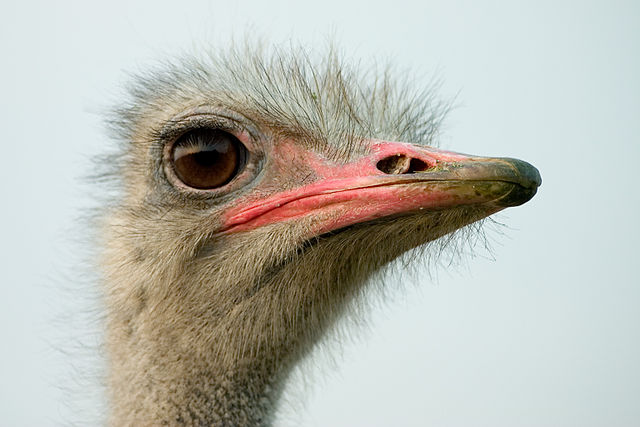The common ostrich, or simply ostrich, is a species of flightless bird native to certain large areas of Africa. It is one of two extant species of ostriches, the only living members of the genus Struthio in the ratite order of birds. The other is the Somali ostrich, which was recognized as a distinct species by BirdLife International in 2014 having been previously considered a distinctive subspecies of ostrich.
Common ostrich
Head feathers are a thin layer of down.
Long eyelashes protect the eyes.
Feet are frequently missing the nail on the outer toe.
Flightless birds are birds that, through evolution, lost the ability to fly. There are over 60 extant species, including the well-known ratites and penguins. The smallest flightless bird is the Inaccessible Island rail. The largest flightless bird, which is also the largest living bird in general, is the common ostrich.
King penguins (Aptenodytes patagonicus). Penguins are a well-known example of flightless birds.
An Okarito kiwi (Apteryx rowi), also known as the rowi
Common ostrich (Struthio camelus). Ostriches are the largest extant flightless birds as well as the largest extant birds in general.
An extinct moa. Until the arrival of humans, New Zealand's only mammals were bats and seals, resulting in many bird species evolving to fill the open niches. While many of New Zealand's flightless birds are now extinct, some, such as the kiwi, kākāpō, weka, and takahē have survived to the present day.








